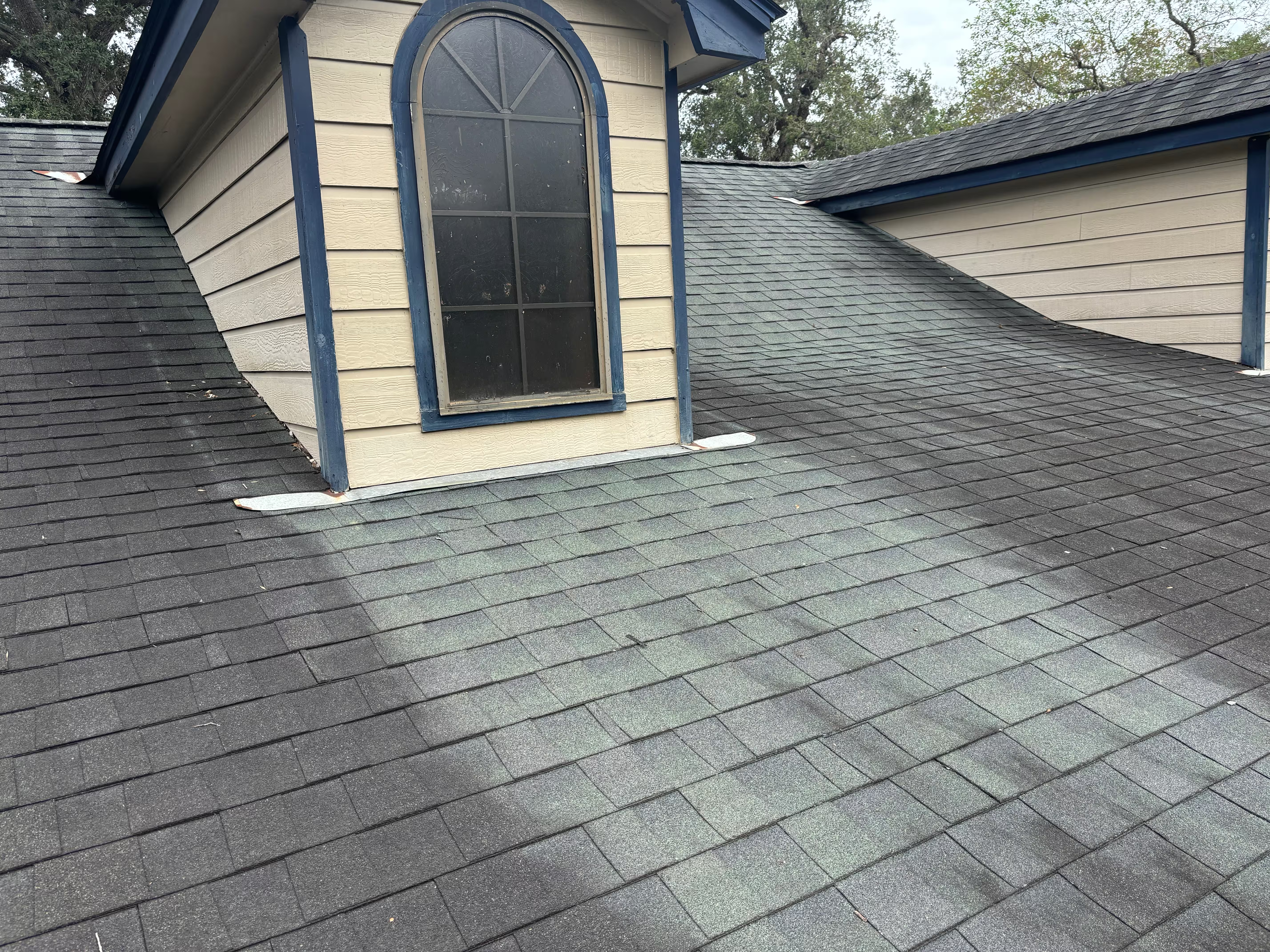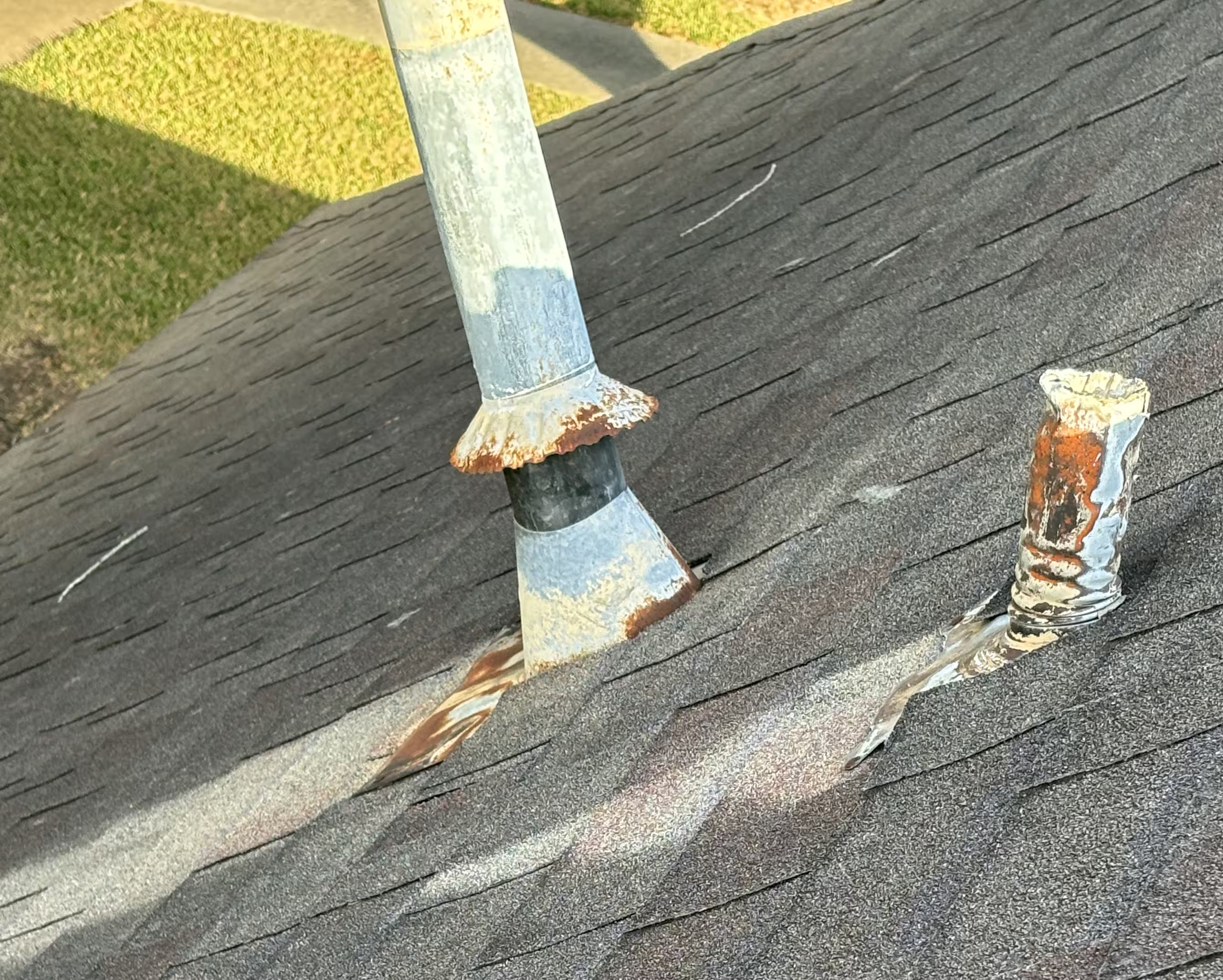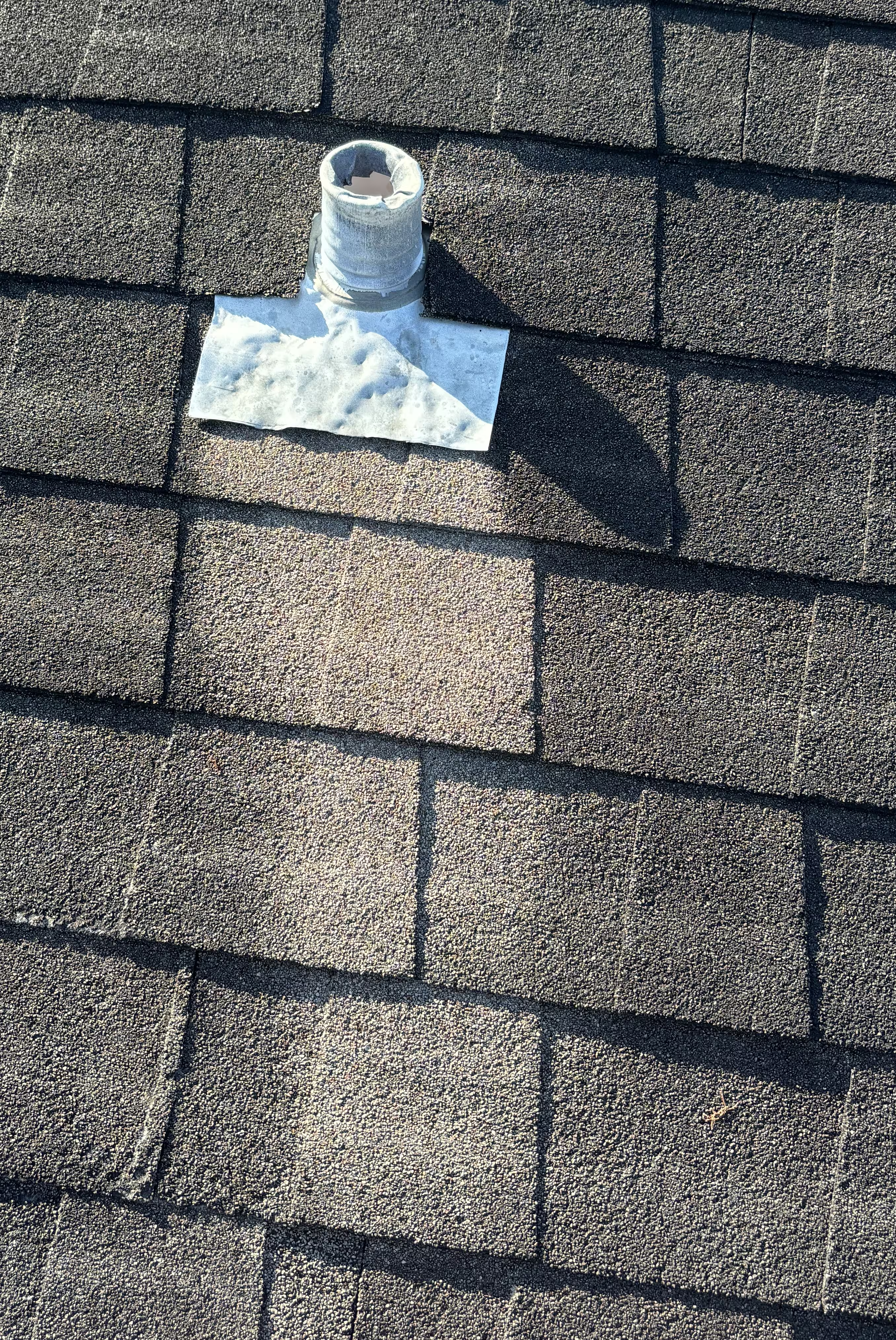Experts are standing by to help
Schedule a free inspection and quote
The Truth About Those Streaks on Your Roof: Understanding Algae Growth and Prevention in Houston
Have you ever noticed dark streaks or discoloration on your roof and assumed it needed cleaning? You're not alone. At Tetralto Roofing, we frequently hear from Houston-area homeowners concerned about the appearance of their shingles—especially in neighborhoods like Missouri City and Sugar Land.

But what you’re seeing might not be what you think. Those dark streaks aren’t always a sign of dirt or damage. In fact, they may be telling a fascinating story about your roof—and even showing you the cleanest parts. Let’s break down the science behind those streaks, why they form, and how your roof may already be fighting back against them.
The Culprit Behind Roof Discoloration: Gloeocapsa Magma
What looks like staining, mold, or grime is often a type of blue-green algae known as Gloeocapsa Magma. This resilient organism loves warm, humid climates, making the Houston area—especially shaded and north-facing roofs—an ideal environment.
Once established, these algae feed on the limestone filler used in many asphalt shingles, slowly spreading across your roof. Over time, this can:
- Diminish curb appeal
- Create the appearance of premature aging
- Retain moisture that may contribute to granule loss
- Potentially shorten the lifespan of your roof
As part of every inspection, Tetralto Roofing evaluates whether algae growth is merely cosmetic or if it’s contributing to deeper issues that warrant attention.

The Mystery of Roof Streaking Explained
You’ve probably seen those light streaks trailing down from metal components like vents, flashing, or chimney caps. Many homeowners assume this means the roof is failing or leaking—but here’s the truth: those are actually the clean parts.
Rainwater that runs over metal elements washes trace amounts of copper or zinc ions down the roof. These metal ions naturally inhibit algae growth, leaving behind cleaner-looking streaks in contrast to algae-covered areas. This isn’t a flaw—it’s a built-in, nature-powered cleaning mechanism that’s especially noticeable in our Houston humidity.
How Metal Ions Fight Algae on Houston Roofs
The process is as scientific as it is simple. Copper and zinc ions disrupt algae cells by:
- Breaking down their outer membranes
- Blocking their ability to photosynthesize
- Halting their ability to reproduce
This principle has been used for centuries—from boat hulls to architectural metals—and today, it’s thoughtfully incorporated into roofing design. At Tetralto, we factor this into both roof repairs and replacements, especially when evaluating long-term performance under local conditions.

Shingles That Fight Back
Many premium roofing systems today are manufactured with algae resistance in mind. These high-quality shingles often contain copper-based granules that slowly release ions over time—helping maintain the color and integrity of your roof without the need for frequent cleaning.
This protection typically lasts 10 to 15 years, depending on the product and environmental conditions. It's one of many elements we review with homeowners when recommending the best roofing system for their specific home.
What This Means for Your Roof
Here's what these streaks and algae patterns can tell you:
- If you're seeing lighter streaks, you're actually looking at clean zones where algae can't grow—your roof is naturally self-cleaning in those areas.
- If your roof is older, the built-in algae resistance may have worn down, especially in Houston’s climate, signaling it might be time for an inspection.
- If your roof is newer, it may still have active algae-fighting properties, something we can confirm during a free roof checkup.
If you're planning a roof replacement, choosing a system with built-in algae resistance is a smart, long-term investment.
What You Can Do
If your roof is showing signs of algae growth, here’s how Tetralto Roofing can help:
Professional Roof Cleaning – We offer gentle, low-pressure cleanings using the right solutions to remove algae without damaging your shingles.
Install Zinc or Copper Strips – These can be installed along the roof ridge to continue the algae-fighting process each time it rains.
Choose Algae-Resistant Shingles at Replacement Time – We’ll guide you through shingle options that include long-term protection built right in.
Trim Trees and Branches – Reducing shade helps keep your roof dry and less welcoming to algae and moss.
We also include free annual checkups with every roof replacement or major repair, helping you stay ahead of small issues before they become expensive problems.
Final Thoughts
So the next time you spot those mysterious streaks, remember—they’re often a sign that your roof is doing its job. And if your roof is ready for cleaning, reinforcement, or replacement, Tetralto Roofing is here to help.
We combine roofing science with honest assessments and high-performance materials to ensure your home stays protected—and looking great—for years to come.
Schedule your free roof inspection today by calling 281-895-1213 and find out why homeowners across Missouri City, Sugar Land, and greater Houston trust Tetralto Roofing for clarity, quality, and long-term care.

